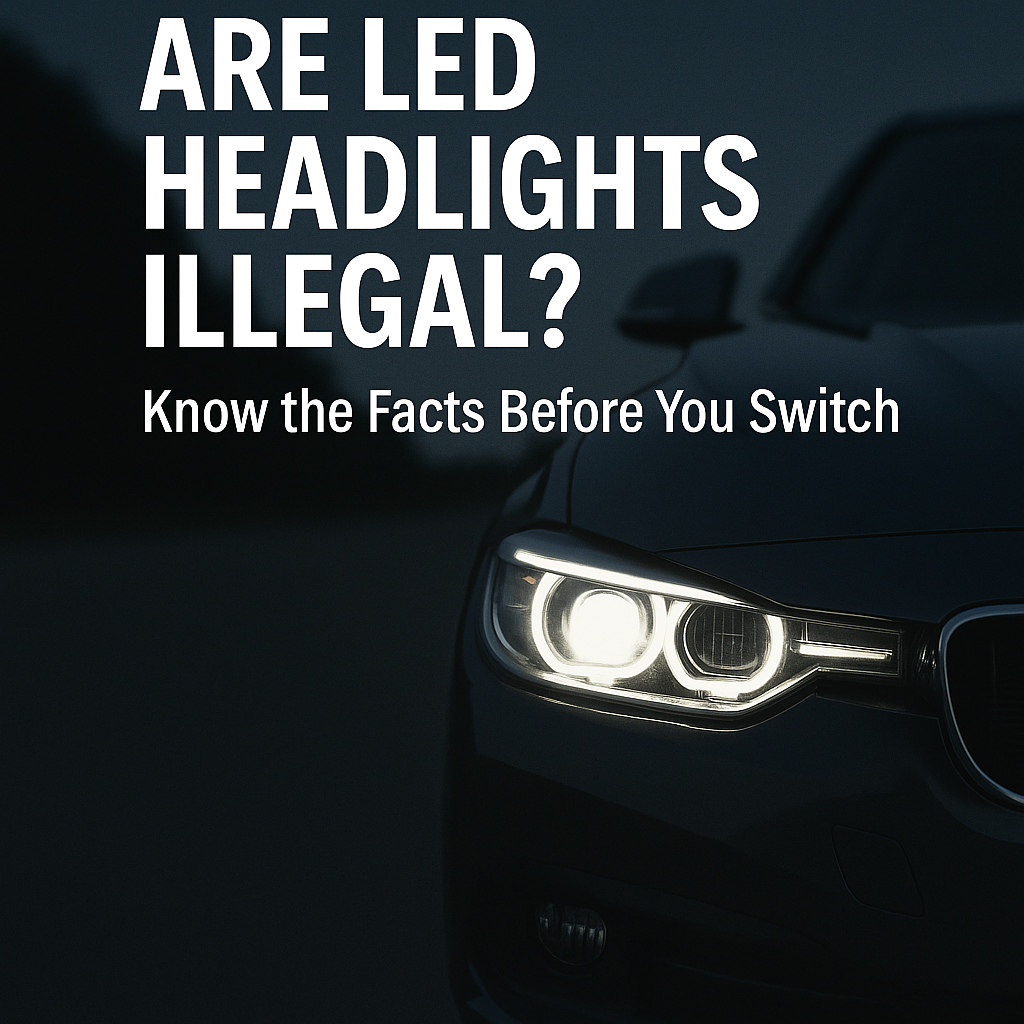With the growing popularity of LED headlights and their promise of better visibility and longer lifespan, many drivers are wondering about their legal status before making the switch. Are LED headlights illegal?
LED headlights are legal in all 50 U.S. states when they are properly installed as original equipment on new vehicles or as DOT-approved aftermarket replacements that meet federal safety standards.
However, this seemingly straightforward answer comes with important caveats that could affect your specific situation. Certain types of LED lighting conversions and improper installations can actually be illegal, and understanding these distinctions can help you avoid costly tickets or safety issues.
What Makes Some LED Headlights Illegal?
LED headlights become illegal when they don't comply with federal safety standards or when they're improperly installed. The most common violation occurs when people try to convert their halogen headlight housing to fit LED bulbs. These housings are specifically designed for halogen bulbs, and installing LEDs in them can create dangerous glare for oncoming traffic, even if the LED bulbs themselves are DOT-approved.
Another factor that can make LED headlights illegal is their color temperature. Legal headlights must produce white or selective yellow light. Some aftermarket LED bulbs that produce blue-tinted light or have a color temperature above 6000K are not street legal, regardless of their installation method.
How Can I Legally Upgrade To LED Headlights?
The safest and most legal way to upgrade to LED headlights is to purchase a vehicle that comes with them as original equipment. If that's not an option, you can install a complete DOT-approved LED headlight assembly that's specifically designed for your vehicle model. These assemblies include both the bulb and housing, ensuring proper beam pattern and light distribution.
Working with a professional installer who understands federal and state regulations can also help ensure your LED upgrade remains within legal boundaries. They can verify that your chosen LED conversion kit is properly certified and compatible with your vehicle.
What Are The Penalties For Illegal LED Headlights?
If you're caught with illegal LED headlights, you could face various consequences depending on your location. Most commonly, police officers will issue a fix-it ticket, requiring you to replace the illegal lights within a specified timeframe. These tickets typically range from $100 to $200.
More serious penalties can apply if your illegal LED headlights contribute to an accident. This could result in higher fines, points on your license, and potential liability issues with your insurance company. Additionally, some states require vehicle inspections, and illegal LED headlights will cause your vehicle to fail, preventing you from renewing your registration.
What's The Difference Between DOT-Approved And Non-Approved LED Headlights?
DOT-approved LED headlights have undergone rigorous testing to meet Federal Motor Vehicle Safety Standards (FMVSS). These standards ensure the lights provide adequate illumination without causing excessive glare. Look for the "DOT" marking on the headlight lens or housing - this indicates the product meets federal requirements.
Non-approved LED headlights often lack proper testing and certification. While they might be cheaper and may even appear brighter, they frequently create unsafe conditions by producing scattered light patterns or excessive glare. These lights are typically marketed for "off-road use only" and are not legal for street use.
How Bright Can LED Headlights Legally Be?
Federal regulations don't specify a maximum brightness in lumens, but rather focus on the pattern and distribution of light. However, most DOT-approved LED headlights produce between 2,000 and 4,000 lumens. The key requirement is that low beams must illuminate the road for at least 150 feet ahead while avoiding excessive glare for oncoming traffic.
Brightness becomes illegal when it creates dangerous conditions for other drivers. Some aftermarket LEDs produce far more lumens than necessary, leading to complaints and potential tickets. The focus should be on even light distribution and proper aim rather than raw brightness output.
Many states have specific laws about headlight alignment and regularly test this during vehicle inspections. A headlight that's too bright or improperly aimed, even if DOT-approved, can still result in citations or failed inspections.
Taking The Next Step With LED Headlights
Before making any changes to your vehicle's lighting system, consult with a certified automotive lighting specialist who can evaluate your specific vehicle model and recommend a DOT-approved LED solution that meets all legal requirements. This small investment in professional guidance can save you from costly tickets, failed inspections, and potential safety issues down the road.


